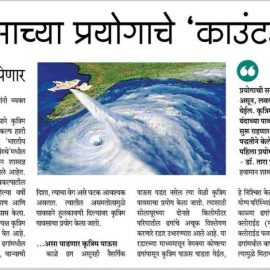The Indian Institute of Tropical Meteorology uses the Lufft CHM 15k Ceilometer for several research studies.
Über das Indian Institute for Tropical Meteorology
The Indian Institute of Tropical Meteorology (IITM) based in Pune, India, is an autonomous research institute of the Ministry of Earth Sciences (MoES), Govt. of India, which is responsible for obtaining scientific knowledge in the fields of meteorology and atmospheric research. It conducts studies in agriculture, economics, healthcare, hydrology, transportation, communications and more.
About the project
Last year, the institute installed two new LIDAR-based Lufft CHM 15k ceilometer for the:
- estimation of the atmospheric aerosol forcing under different sky conditions,
- investigation of environmental impacts at regional and global level,
- observation of cloud microphysics,
- measurement of cloud upper and lower limits
- characterization of cloud density.
One of these was first used in Punjab for a study on the observation of “smog”, which arose during the burning of cereal stubble on the fields. The cloud height sensor is now part of a cloud profiling study at Indira Gandhi International Airport in New Delhi.
The second CHM 15k is installed on an observatory in Solapur for a study called “Cloud Aerosol Interaction and Precipitation Enhancement Experiment” (short “CAIPEEX“). The aim here is to explore so-called “cloud seeding”, which is the artificial generation of precipitation using chemicals that alter the microphysical processes within the cloud. The experiment will be carried out for over three years in the “rain shadow” region of Solapur and is now in its second year. A rain shadow is an area that lies on the lee side of a mountain. That is the side facing away from the wind, where much less precipitation occurs than on the opposite side of the mountain, the windward side.
Sutron India, now HACH DHR India Pvt. Ltd., was entrusted with the delivery, installation and commissioning of the two Ceilometers at New Delhi Airport and in Solapur.
Meanwhile, the IITM asked for two more Ceilometers to be used for the National Monsoon Mission project to investigate monsoon rains.
More about the CHM 15k Cloud Height Sensor
The CHM 15k has an excellent signal quality and thus detects
- different cloud layers (max. 9)
- cloud penetration depths,
- the Sky Condition Index
- the vertical visibility (VOR)
- aerosol layer heights,
- boundary layers
- and aerosol backscattering profiles
with a measurement range of 15 km.
Would you like to learn more about us?





